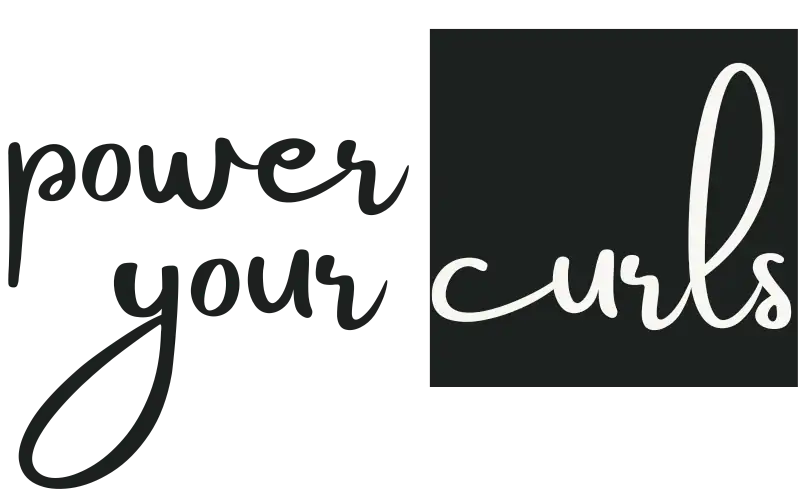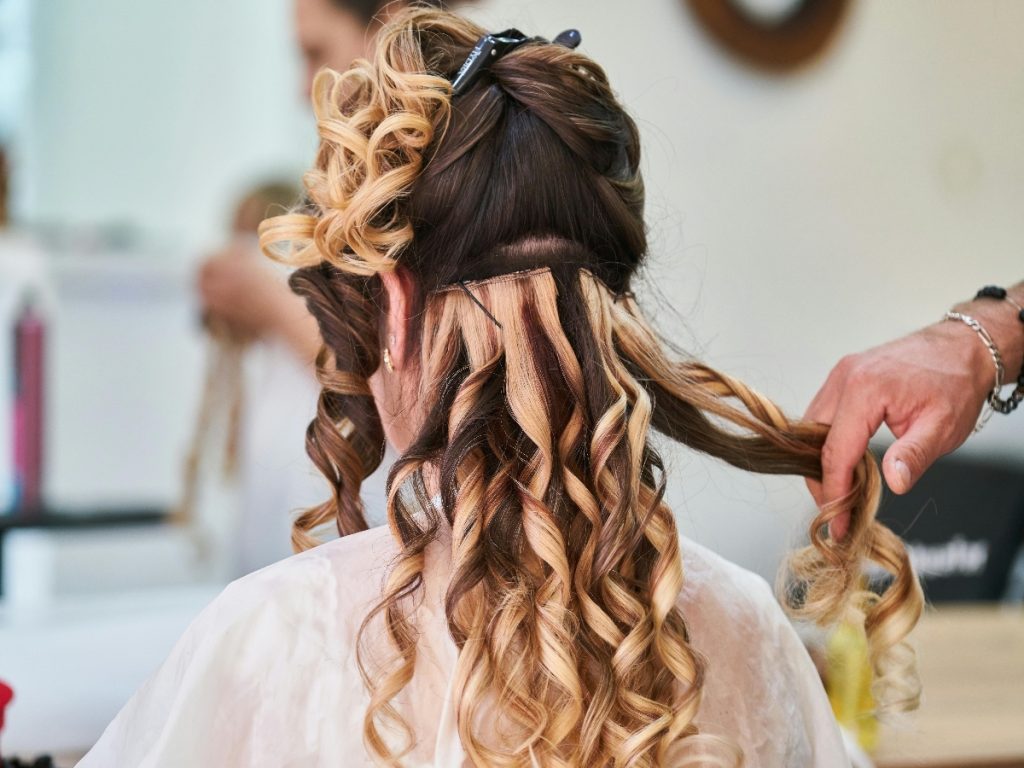
There are many factors behind damaging curly hair. One example is treating hair with chemicals such as bleaching, relaxing, rebonding, and so on. Frequently exposing your hair to chemical treatments can damage the hair shaft.
Other factors are physical causes which are accessories, aggressive washing, and improper towel drying. Using these tools can cause friction to the hair surface, which can damage hair.
Another factor is overexposure to UV rays, which can hit hair fibers. This will lead to dull, rough, and brittle hair.
But one of the main culprits in damaged hair is heat styling. Hair dryers or other heat-styling tools can be an easy fix to quickly dry hair after showering but misusing it can cause roughness, dryness and loss of hair color.
What causes heat-damaged curls?

Now that we established the different causes of damaged hair, heat styling tools especially blow dryers can cause a concern for curls.
According to Phys.org, flat irons and curling irons can damage 85% of keratin proteins in the hair, which will lead to brittle and dry hair.
PowerYourCurls trichologist Dr. Faisal Hammadi explained that overexposing the curls to high heat can alter the shape of the curls’ keratin proteins.
“It will eventually lose its elasticity, promote weaker strands, and cause hair shaft damage,” said Dr. Hammadi.
A study also indicated that heating damp hair while using tools can result in weak, dry, and brittle hair.
How do you know if your curls are heat-damaged?
The first sign that your hair is damaged by heat is when it is too dry and dull because of loss of moisture, said Dr. Hammadi.
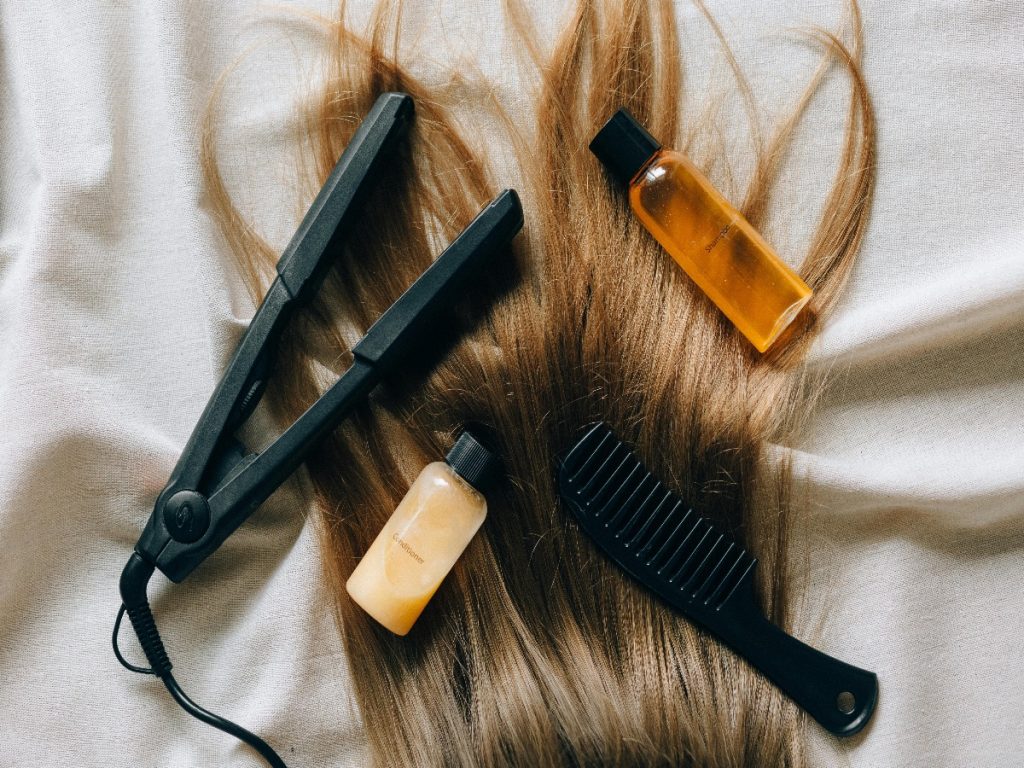
“When it is dry, hair becomes dull. When this happens, your hair will struggle to maintain moisture, which will turn your hair dehydrated and brittle,” Dr. Hammadi explained.
Regarding dry hair, Dr. Hammadi said the loss of moisture and elasticity will increase the risk of breakage and split ends.
“Split ends, which are scientifically known as trichoptilosis or schizotrichi, happen because of regular exposure to heat, which makes hair lose the ability to retain moisture. You can detect split ends when the tips or upper strands of hair split apart. The hair can be divided in two where the hair almost looks like tree branches,” pointed out Dr. Hammadi.
“When your hair has split ends, it will weaken strands, increasing the risk of breakage. Losing elasticity due to heat can also easily break your hair. You may notice some of your shorter strands stick up, which means your hair broke off,” he added.
Another sign behind heat styling is flyaways. Dr. Hammadi said using heating tools at high heat can get rid of moisture from the strands, causing hair cuticles to get damaged.
“This will prevent your hair from lying flat. Flyaways are causes of breakage and short strands that appear after breaking off near your roots. It can be difficult to manage and can alter the look of your hair when you go for a polished look,” said Dr. Hammadi.
Lastly, the worst sign of heat-damaged hair is hair loss, which can happen when hair is too weak from blow drying or heat styling the hair more often.
“Hair shedding can become more frequent after heat styling damages the hair, resulting in a lack of keratin. Some common signs are excessive hair shedding from brushing or showering,” said Dr. Hammadi.
How do you protect curls from heat damage?
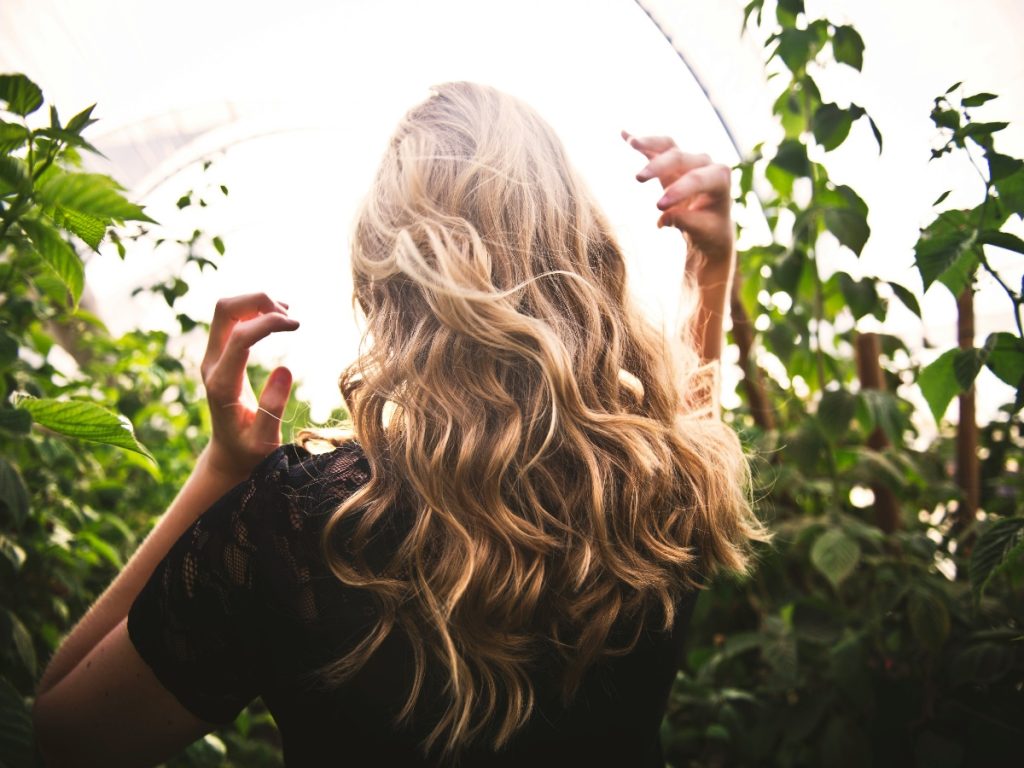
To prevent heat damage, Dr. Hammadi advised using heat-free techniques once in a while. One way is to embrace air drying the hair but make sure to use anti-frizz hair products after washing the hair.
Dr. Hammadi advised using anti-frizz creams, leave-in conditioners or hair oils to help promote moisture and shine, which will keep the hair healthy as it dries.
Here are some products you can try to keep your hair looking healthy:
Pomegranate & Honey Curl Refreshing Spray
Coconut Shea Natural Curling Jelly
Ancient Egyptian Anti-Breakage Collection Daily Treatment Oil
The second heat-free strategy to dry hair without damage is using a microfiber towel instead of a cotton towel, which can strip off moisture.
When using the microfibre towel, make sure to avoid aggressive rubbing, which can cause friction, a number one culprit for breakage and frizz.
“Pat dry or blot the hair with the towel gently. You want to remove water from the hair without any aggressive or rough motions on the strands,” said Dr. Hammadi.
“Section your hair as you dry it with a towel as it helps to remove water from hair evenly,” added Dr. Hammadi.
How do you heat curly hair without damaging it?
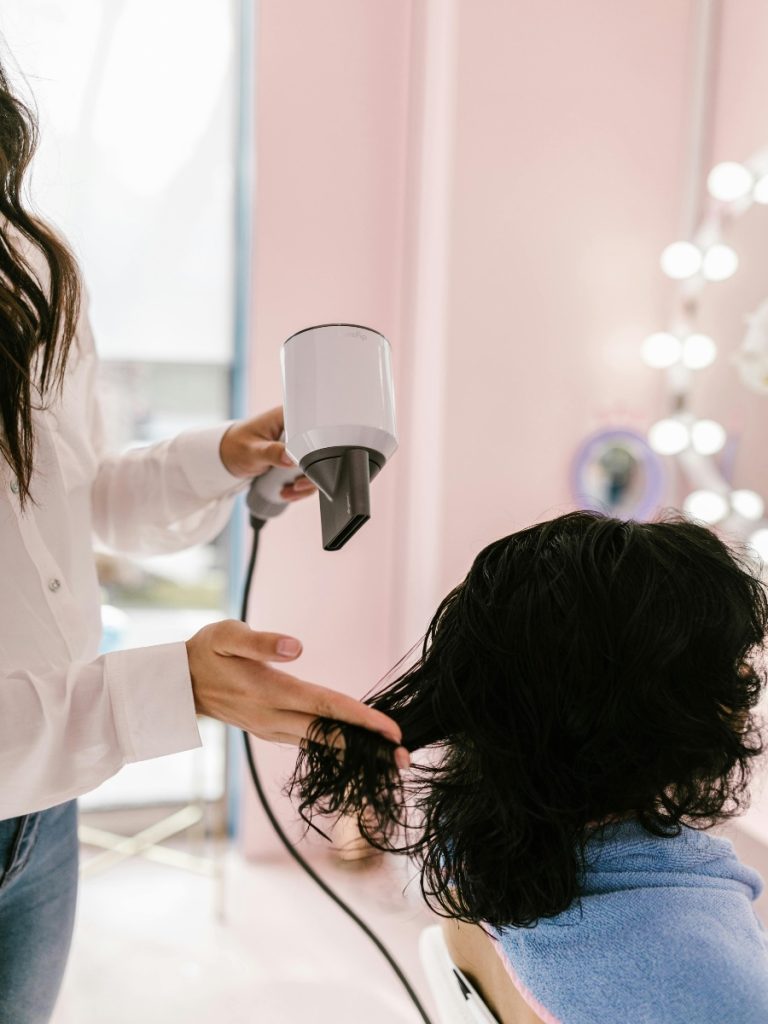
Now that the risks of heat styling have been established, is there a way to use a hair dryer without destroying your locks? PowerYourCurls hairstylist Gwenda Harmon has some tips to prevent damage to curls.
1. If drying curls cannot be avoided, Harmon shared that proper heat styling includes using the perfect heat temperature.
“A general rule is to stay at least 410°F. If you go beyond that heat temperature, it will burn the keratin in your hair,” said Harmon.
2. It would also help to limit the time to 10 seconds for each strand to reduce heat exposure from the hair, said Harmon.
3. A study also recommended drying hair with a blow dryer at a distance of 15 centimeters while doing a continuous motion to reduce damage on drying hair.
4. It is also important to section the hair while you blow dry or use a curling iron. This will distribute the heat evenly without damaging the curls.
“For large barrels of curling iron, you can add more hair but will smaller barrels, make sure you style a manageable amount,” said Harmon.
“For blow drying, start with the lower sections and gradually dry the hair up. It will prevent top layers from being frizzy, damaged and dry,” advised Harmon.
5. Limiting blow drying or ironing to three to five days can also reduce damage to the hair.
“If you do this, the style will retain for a few days. You can apply dry shampoo to maintain the style and properly moisturize the hair after heat styling,” said Harmon.
6. Use a heat protectant while applying heat to protect it from the risk of damage.
“Heat protection sprays should have important ingredients such as dimethicone, cyclomethicone, or silicone-based polymers. These will create a protective barrier on the hair shaft, which will prevent moisture loss and heat damage,” said Harmon.
“Start putting heat protection from roots up to the ends. Focus on mid-lengths and end of the strands, which are usually prone to heat damage,” added Harmon.
Harmon recommends products like Mongogo Oil Thermal & Heat Protectant Spray and Daily Oil Moisturizer Treatment as the best heat protectants for your curly hair.
7. Harmon also warned against using heat styling tools while the hair is completely wet or when it is straight out of the shower.
“Wet hair is more vulnerable than dry hair. Exposing it to heat styling can cause more damage and make it weaker. Allow it to partially dry first before using heat styling tools,” advised Harmon.
8. Before heat styling, Harmon recommends applying leave-in conditioners and curling creams to allow hair to be resilient or less vulnerable to heating tools.
Harmon recommends applying Olive Miracle: Hair & Scalp Strengthening Leave-In Conditioner or Ancient Egyptian Anti-Breakage Collection Leave-In Lotion as some of the effective hair care products before heat styling.
How do you fix curly hair after heat damage?
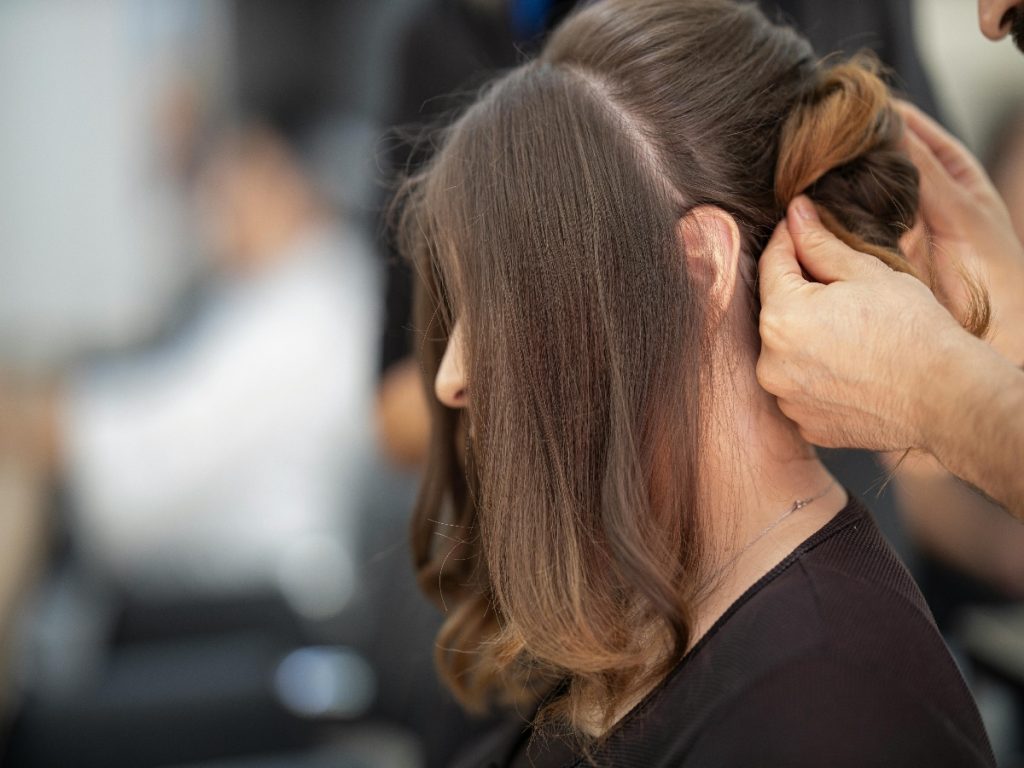
When all is said and done, it cannot be helped when hair is already damaged from excessive heat styling. It may take a long time to revive those curls after heat damage but there are some home remedies to return hair to becoming healthy, bouncy, and strong again.
First, use deep-conditioning treatment products to revive defined and strong curls, said Harmon.
Harmon recommends using Babassu & Mint Deep Conditioner or Curl Ecstacy Hair Tea Deep Conditioner.
“Use a wide tooth comb while applying the deep conditioning treatment to evenly coat the hair with nutrients. Afterwards, rinse with cool water to seal the cuticle and lock in moisture,” advised Harmon.
Second, use a diffuser when blow-drying the hair. Then, immediately stop using heat once your hair is already mostly dry, possibly at 80%.
“Remember to limit blow drying on already damaged hair. You don’t want the hair to be too damaged,” said Harmon.
Third, use silk or satin pillowcases when sleeping to avoid losing moisture from hair when you sleep.
Fourth, trimming off the heat-damaged hair can improve the shape of your curls. Harmon said you can wait until the new strands grow or begin the healing process by cutting the strands off the end.
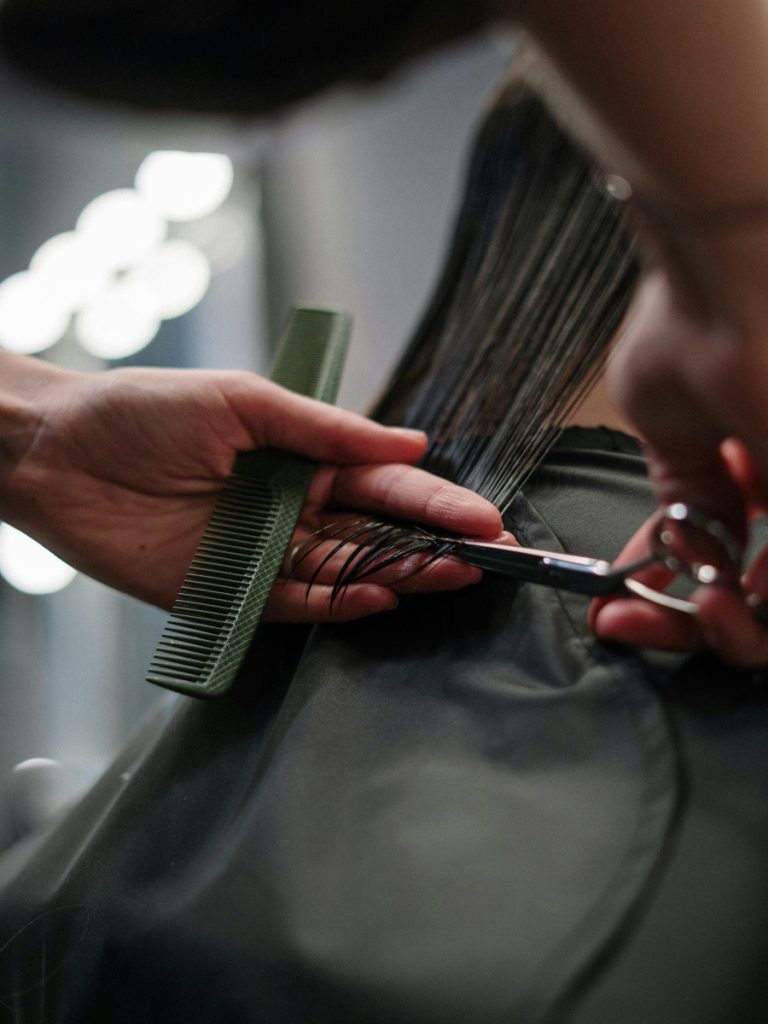
“It also helps to reduce the use of curl products, which is a cost-effective way,” said Harmon.
Fifth, protect curls by wearing protective hairstyles such as twisted buns and braids.
“It is looser than other hairstyles and they are gentle on the scalp. It will also reduce the need for heat styling tools,” said Harmon.
